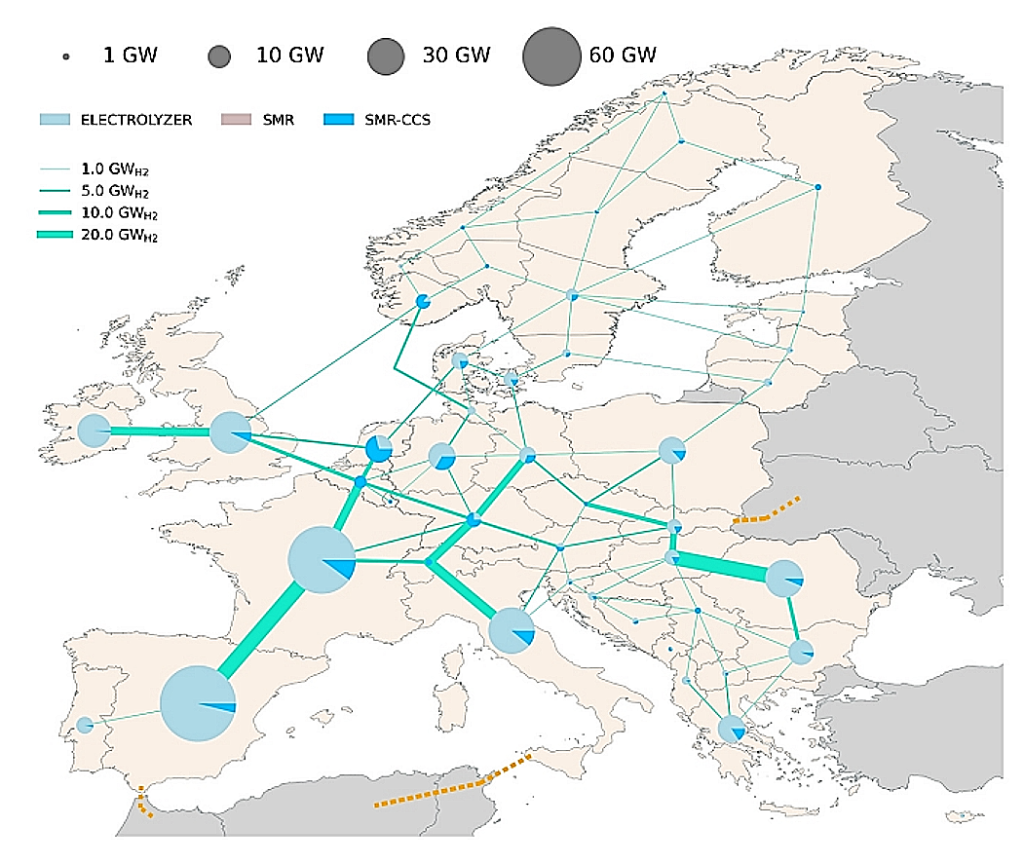Perspectives on green hydrogen in Europe –
during an energy crisis and towards future climate neutrality
Hydrogen and regional energy infrastructure are significant for the European Green Deal and was focus of the SuperP2G research project (Synergies Utilising renewable Power Regionally by means of Power to Gas).
Five national projects (Denmark, Netherlands, Germany, Austria, and Italy) cooperated to investigate Power-to-Gas feasibility. The energy crisis due to the war in Ukraine peaked during the project.
The demand for green hydrogen increased as natural gas was reduced. In 2022, the cost of blue hydrogen was 9.5-12.6 EUR/kg. Higher electricity
prices impacted the cost of green hydrogen less. Considering the 2021-2022 level of electricity and gas prices, and the potential flexibility of electrolysers, electrolytic hydrogen was on a par with blue hydrogen. On the long term, green hydrogen is assumed to be competitive around 2030. A fast ramping up and favourable electricity cost development could halve the hydrogen production cost until 2040 with investment being the major contributor to a cost reduction. Meanwhile, the smart operation of a wind/electrolyser system might achieve 24% reduction of its operation cost.

The following measures are recommended to introduce green hydrogen on large scale:
1) Certification of green and low carbon hydrogen and a uniform CO2 price;
2) Ensuring a level playing field across markets;
3) Enabling policies to enhance European security of supply by increasing domestic production and diversifying imports;
4) Fast ramping of renewable electricity generation;
5) Coordinated planning of hydrogen, methane and electricity infrastructures.
Power-to-Gas is important to enable high renewable energy shares in the European Green Deal. This article provides perspectives from different analyses of feasibility of Power-to-Gas in Europe. Promising results were found about reduction of hydrogen costs through development of flexible and efficient operation, reduced investment costs driven by scaling and learning curves, optimised placement and improved infrastructure with dedicated hydrogen grids. Furthermore, increasing prices for natural gas due to the Russian invasion to Ukraine led to favourable conditions for renewable hydrogen compared to blue hydrogen based on natural gas with CCS.

